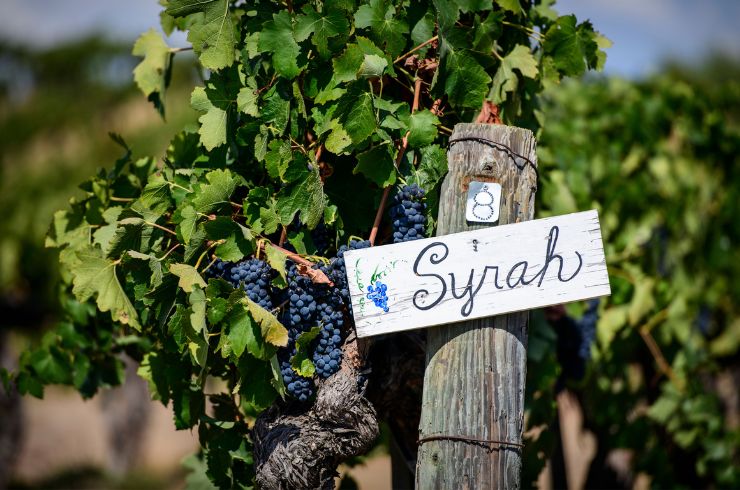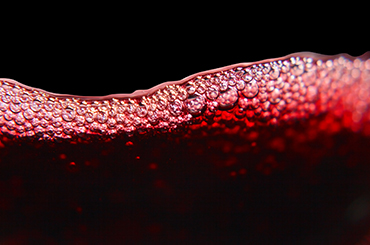No variety in Australia has ascended to an exalted mantle as rapidly as grenache. Today, it’s responsible for wines defined by poise, joyous fruit and at the top-drawer, the sort of detail that leaves one giddy with the epiphany that this historical cultivar, born of a fortified past, can be responsible for wines that transcend other Australian expressions on an international stage. It’s also the only established variety, besides mourvèdre (aka mataro), that augurs well for a climate-challenged future.
Grenache’s inexorable rise is due to the quality of fruit – much of it old, bush-vine material – and the leading producers’ comprehension of superior sites and appropriate handling. This is expressed with strident confidence, manifest as the extraction of proper tannins – the lack thereof is still too often the bane of Australian winemaking.
Structure is achieved with varying combinations of whole berries, non-destemmed, destemmed and crushed fruit, with the better crafts-folk extracting gently for far longer than the Australian norm. Neutral, large-format oak, concrete and ceramic eggs are the vessels of choice. Peter Fraser at Yangarra in McLaren Vale, for example, extracts well in excess of 40 days for his top cuvées; Bondar and Samson Tall, other stellar McLaren Vale makers, circa 30.
 Yangarra’s High Sands is a celebrated Australian grenache – James Halliday named it Wine of the Year in 2020.
Yangarra’s High Sands is a celebrated Australian grenache – James Halliday named it Wine of the Year in 2020.
Producers macerating for just north of a week before tweaking tannins and pH and whacking their wines into small-format oak, new or old, or the minimalists that leave whole clusters to ferment without agitation to the effect of pulpy, generic wines, are far behind the contemporary curve.
In the Mediterranean, grenache’s spiritual home, the grape is tantamount to a religion. Its vineyards define vast landscapes while its wines, as simple or complex as the moment demands, bind disparate cultures across tables.
The grape reaches an apotheosis of spellbinding weightlessness and intensity on the sands of Château Rayas in France’s Châteauneuf du Pape. And yet, to my thinking, it is the elevated sites of clay and sand in Spain’s Sierra del Gredos that serve as both prototypes and siblings to the best Australian grenache.
 The Blewitt Springs subregion of McLaren Vale is coveted for its exceptional grenache expressions. Image via @bondarwines.
The Blewitt Springs subregion of McLaren Vale is coveted for its exceptional grenache expressions. Image via @bondarwines.
Our finest are transparent, delicate, cherry red of hue, with shades of red fruit, bergamot and kirsch not dissimilar to pinot noir. They are buffered by fibrous tannins that slake the thirst with a briary, sandalwood stain, somewhat akin to nebbiolo. They almost unanimously hail from McLaren Vale’s elevated ironstone and sands in the Blewitt Springs subzone.
While it is tempting to create a hierarchy of Grand and Premier Cru equivalents, I will leave this topic alone for the moment and simply provide the swag of wines below, which will stimulate the intellect as much as make you reach for the next glass.
Grenache’s inexorable rise is due to the quality of fruit – much of it old, bush-vine material – and the leading producers’ comprehension of superior sites and appropriate handling. This is expressed with strident confidence, manifest as the extraction of proper tannins – the lack thereof is still too often the bane of Australian winemaking.
Structure is achieved with varying combinations of whole berries, non-destemmed, destemmed and crushed fruit, with the better crafts-folk extracting gently for far longer than the Australian norm. Neutral, large-format oak, concrete and ceramic eggs are the vessels of choice. Peter Fraser at Yangarra in McLaren Vale, for example, extracts well in excess of 40 days for his top cuvées; Bondar and Samson Tall, other stellar McLaren Vale makers, circa 30.
 Yangarra’s High Sands is a celebrated Australian grenache – James Halliday named it Wine of the Year in 2020.
Yangarra’s High Sands is a celebrated Australian grenache – James Halliday named it Wine of the Year in 2020. Producers macerating for just north of a week before tweaking tannins and pH and whacking their wines into small-format oak, new or old, or the minimalists that leave whole clusters to ferment without agitation to the effect of pulpy, generic wines, are far behind the contemporary curve.
In the Mediterranean, grenache’s spiritual home, the grape is tantamount to a religion. Its vineyards define vast landscapes while its wines, as simple or complex as the moment demands, bind disparate cultures across tables.
The grape reaches an apotheosis of spellbinding weightlessness and intensity on the sands of Château Rayas in France’s Châteauneuf du Pape. And yet, to my thinking, it is the elevated sites of clay and sand in Spain’s Sierra del Gredos that serve as both prototypes and siblings to the best Australian grenache.
 The Blewitt Springs subregion of McLaren Vale is coveted for its exceptional grenache expressions. Image via @bondarwines.
The Blewitt Springs subregion of McLaren Vale is coveted for its exceptional grenache expressions. Image via @bondarwines. Our finest are transparent, delicate, cherry red of hue, with shades of red fruit, bergamot and kirsch not dissimilar to pinot noir. They are buffered by fibrous tannins that slake the thirst with a briary, sandalwood stain, somewhat akin to nebbiolo. They almost unanimously hail from McLaren Vale’s elevated ironstone and sands in the Blewitt Springs subzone.
While it is tempting to create a hierarchy of Grand and Premier Cru equivalents, I will leave this topic alone for the moment and simply provide the swag of wines below, which will stimulate the intellect as much as make you reach for the next glass.
Sign up to view these tasting notes and ratings
By becoming a member of Wine Companion, you'll have access to the largest database of wines in Australia.
Latest Articles
-
News
The power of perspective: Ryan Ponsford's Entropy
2 Dec 2025 -
Events
Halliday Wine Academy: Wine Immersion Tours
30 Nov 2025 -
Travel
Scenic's Southern France and Bordeaux river cruises are tailor made for wine lovers
30 Nov 2025 -
News
What’s in a name? The etymological origins of popular grapes.
30 Nov 2025





